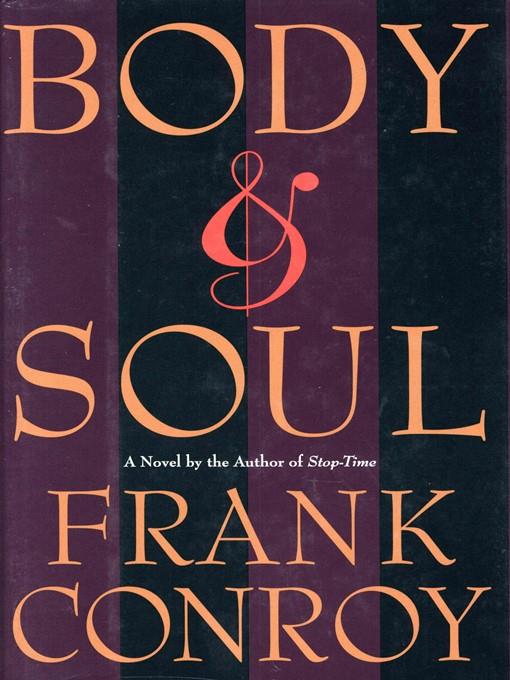
Body & Soul
کتاب های مرتبط
- اطلاعات
- نقد و بررسی
- دیدگاه کاربران
نقد و بررسی

October 4, 1993
When the author of Stop-Time and Midair produces a new work, it is an event to celebrate. And although Conroy's bildungsroman of a boy finding his identity in his musical genius has some flaws, it is by and large an engrossing novel, written in a supple and elegant prose and displaying remarkable insight into the mind of a prodigy. Conroy's protagonist is Claude Rawlings, who grows up in the 1940s in the shadow of New York's Third Avenue El. Claude's education in some ways is similar to Billy Bathgate's: neglected by his emotionally unstable, alcoholic, cab-driver mother, he shines shoes, lifts coins from sewers and learns to steal. He is introduced to another world when Aaron Weisfeld, a music store owner and WW II refugee, recognizes his musical gifts and transports him to the Park Avenue apartment of a maestro whose Bechstein piano Claude uses and eventually inherits. Even more in the Dickensian mode, Claude falls in love with a cold, arrogant young woman from a patrician New York family, a character who is eerily similar to Estella in Great Expectations . Conroy's depiction of a young boy's discovery of music, the awakening of his sensibility and the flowering of his genius is brilliant. Lucid explanations of musical theory ranging from basic harmonics to the 12-tone scale, from Bach to Charlie Parker to Schoenberg, provide a continuum of insights and discoveries for Claude and for the reader. The first half of the book sweeps Claude along a path strewn with almost miraculous lucky breaks: he has inspired teachers and generous and appreciative patrons; his concerts are unalloyed triumphs--and only the cynical will wish for a disaster to increase the tension. (Readers of Stop Time will also recognize in Claude's childhood an alternative version of Conroy's miserable youth.) The second half is less successful. Claude's immersion in music, an obsession that makes him fascinating as a youth, renders him hollow as a man, and while Conroy obviously intends to demonstrate that Claude's emotional life is sterile in several ways, as a protagonist for a time he becomes a muted and shadowy figure. Claude's unquestioning relationship with the kindly Weisfeld, his first and abiding teacher, is less credible once he matures. The revelation of Claude's patrimony is poignantly rendered, however, and provides another look at the nature of creativity. And the book as a whole is harmoniously orchestrated and beautifully observed. 125,000 first printing; film rights to Spring Creek Productions; major ad/promo; author tour.

October 3, 1994
Conroy's debut novel, of a young and neglected musical prodigy who is taken in by a music-store owner, was named one of PW's best books of 1993.

July 1, 1993
New York's Third Avenue el grumbles in the background, and a young boy learns that his instrument can produce "ten thousand degrees of pianissimo" in what is, surprisingly, the first novel by the director of the University of Iowa Writers' Workshop, whose two previous books are "Stop-Time" (1967, autobiography) and "Midair" (1985, short fiction). On a broad, densely populated canvas, Conroy draws on his own passion for both words and music (he's a jazz pianist) to construct a modern American bildungsroman. A fatherless street urchin, Claude Rawlings is blessed with remarkable talent and a nurturing mentor. Finding his true home in music--"no matter where he was, when he sat down at the piano the world around him simply didn't matter"--Claude moves from the "Blue Book for Beginners" to performing his own prize-winning concerto with the London Symphony Orchestra, from snagging coins through street grates and languishing over condescending rich girls to professional acclaim and a mature capacity for love. Claude's journey occurs against a complex backdrop of mid-century U.S. culture: McCarthyism, political corruption, and real-estate scams; barriers of race, ethnicity, and class; the movies as alternative reality; families, rich and poor, whose public faces mask a far more complex reality. A bravura performance. Heavy promotion and a planned film should generate requests. ((Reviewed July 1993))(Reprinted with permission of Booklist, copyright 1993, American Library Association.)

























دیدگاه کاربران